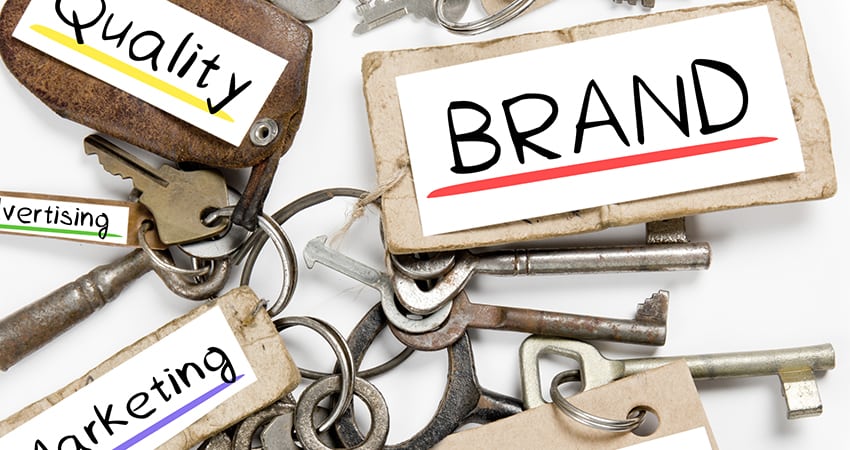When customers think about brands that give back, they may immediately think of TOMS, whose mission is to give a pair of shoes to children in need in over 70 countries with every pair sold. But today, more and more brands are joining the “give back” movement by donating to or partnering with major charities in an effort to raise awareness on various causes.
With consumers, particularly millennials who gravitate towards brands making a positive difference, giving back is a great way to build brand loyalty.
A Trend That Resonates with Younger Shoppers
A study by The Boston Consulting Group found that millennial consumers, taught to recycle at a young age, believe that “collective action” can make a difference. They also believe that working for causes is a part of life and are drawn to big issues, the study found.
Instead of making one-off charitable donations in cash or in kind, Millennials are more likely to integrate these causes into daily life by buying products that support sustainable farming or “fair trade” principles or by joining large movements that aim to solve social or environmental problems.
Compared to non-Millennials, Millennials also prefer to actively engage in a cause campaign by encouraging others to support it (30% vs. 22%) or by participating in fundraising events (27% vs. 16%), according to the study.
U.S. Millennials are receptive to cause marketing and are more likely than non-Millennials to purchase items related to a particular cause (37% vs. 30%). They also expect companies to care about social issues and will reward those that partner with the right causes.
“Millennials have stated how they are happier to align with brands that have a social consciousness rather than those focused on profit only,” said Jeannie Walters, CEO of 360Connext. “But it’s not just that demographic. Most of us are looking for a ‘better reason to buy’ these days.”
Examples of Brands That Give
Eyeglass brand Warby Parker, for example, integrated its “Buy a Pair, Give a Pair” model into its business strategy. For every pair of glasses sold, they donate a pair to their nonprofit partners. According to the company’s website, over 3 million pairs of glasses have been distributed.
In an effort to address the problem, Warby Parker works with partners worldwide in distributing the glasses. The efforts include empowering adult men and women with training opportunities to administer basic eye exams and sell glasses for ultra-affordable prices. They also provide vision care and glasses to school-age children in their classrooms, where teachers are often the first to spot issues.
Zachary Quinn, co-founder and president of apparel brand Love Your Melon, gives hats to children battling cancer. He said the company donates 50% of its profit to nonprofit partners in the fight against pediatric cancer, including pediatric oncology research and family programs, setting it apart from other apparel brands.
The company’s aim is to give a hat to every child battling cancer, regularly donating hats at hospitals and giving events across the country.
Another example is Walmart and Sam’s Club and their support of Children’s Miracle Network hospitals. For six weeks of the year, Walmart employees solicit donations for the cause from customers at checkout.
Accessories and jewelry retailer Alex and Ani aims to create a positive impact with its Charity by Design efforts. The company supports more than 50 nonprofit partners through the sale of custom bracelets designed to reflect each organization. It has donated $50 million through the program, and its employees have volunteered 8,800 hours to the organizations.
Alex and Ani has also worked with celebrity brand ambassadors like singer and actress Mandy Moore and actresses Kelly Cuoco and Elizabeth Olsen to create custom bracelets. All of the proceeds from these sales go toward the Epidermolysis Bullosa Medical Research Foundation.
TOMS an Early Adopter, Leader in Charitable Programs
Shoe retailers TOMs launched its One for One model in 2006, when founder Blake Mycoskie witnessed the hardships faced by children growing up in Argentina without shoes. He decided to address the need and “help advance health, education and economic opportunity for children and their communities,” according to the company’s website.
In 2011, TOMS Eyewear was launched, and has since helped restore sight to over 400,000 people in 13 countries. This includes providing prescription glasses, medical treatment and/or eye surgery from the proceeds of each purchase of eyewear. The program also supports sustainable community-based eye care programs, job creation and basic eye care training to local health volunteers and teachers.
“TOMS is really the leader here, and that holds true today,” said Walters. “But others are getting creative.”
In 2014, TOMS Roasting Co. was launched, providing more than 335,000 weeks of safe water in six countries. With each purchase of TOMS Roasting Co. Coffee, TOMS works with its partners to provide 140 liters of safe water to a person in need. Through this program, the company helps provide entire communities with access to safe water, improving health, economic productivity, job creation and access to education.
In 2015, TOMS Bag Collection was founded with a mission to help provide training for skilled birth attendants and distribute birth kits with important delivery items. As of 2016, TOMS had supported safe birth services for over 25,000 mothers. With every bag purchased, TOMS provide a safe birth for a mother and baby in need.
A Win-Win Approach for Brands and Consumers
Walters said that giving back helps build brand loyalty in two ways. First, consumers are more loyal to a brand that makes them feel good, and the giving aspect of the brand makes consumers feel like they’re doing good.
“So of course, we’ll return to them,” said Walters. “But there’s also a word of mouth aspect to things. We feel good to be ‘in the know’ about these brands and share the good with others.”
Quinn said Love Your Melon has surpassed its original goal of giving 45,000 hats over 18 months, setting a new goal of giving $1 million to pediatric cancer research and therapeutic programs. To date, the company has donated more than $4.3 million toward the fight against pediatric cancer and over 125,000 hats to children with cancer.
“Consumers are excited to be a part of something bigger that’s making a real, significant difference in the lives of thousands of children,” he said.
Quinn said its customers are highly motivated by the fact that a product they love also makes a difference in the fight against pediatric cancer, telling the company it’s why they choose Love Your Melon over other brands. This is especially true of those who have, or have had, a loved one battling cancer.
Walters said that connecting a brand to a cause in a public way is somewhat new. Corporations have had corporate giving programs, core causes and volunteer tie-ins for decades, but consumers didn’t necessarily make buying decisions based on a brand’s cause or conscience.
“Now, customers are speaking up and saying it matters enough to impact their brand choice,” said Walters. “So of course, companies are paying attention and sharing more of what they’re doing, even creating new programs to support this strong desire of customers.”
Hand-crafted Pura Vida Bracelets, founded in Costa Rica, has donated 1% of its annual sales to environmental organizations and partners with more than 190 charities. Bracelets can range from $6 to $15 with styled packs going for $30 to $70.
Paul Goodman, CFO and founder of Pura Vida, said giving back creates a deeper meaning and an overall purpose for the brand and its business.
“It goes far beyond just selling a simple string bracelet,” said Goodman. “We’re providing jobs to artisans around the world as well as helping raise awareness for charities. Customers want to be part of brands that are not just trying to sell them a product.”
The Ecommerce Leader Is In on the Action
Amazon’s Smile program lets customers support a favorite charity every time they shop, at no cost to them. The company donates a portion of eligible purchases to a nonprofit selected by the customer, from a database that includes more than one million organizations around the country. There is no cap on giving in this way.
Amazon spokesperson Ana Rigby said the company is committed to supporting communities where employees live and work, with Amazon Smile being one of several charitable programs.
Walters said as time goes on, she believes more brands will catch the vibe of doing good to do well, especially with members of the upcoming Generation Z demographic expecting it. “Our world needs a lot of help right now, so there are plenty of causes to support,” she said.
Quinn said with so many causes to support and brands eager to use their platforms for good, it is important for them to remain true to their mission and authentic in their approach to making a difference with their business.

